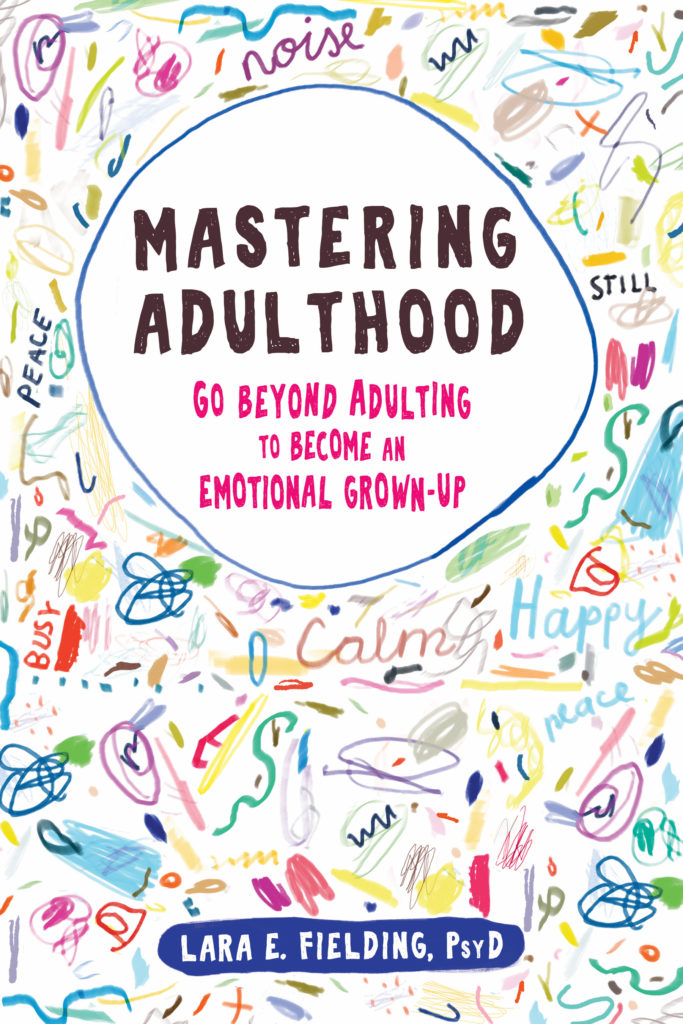OMG seriously! This sucks! I can’t believe I have to do this.
Complaining, we all do it sometimes. We vent, describe, assert, and tell stories of dissatisfaction. Of course we do!
Like all emotional habit patterns, we get a juicy satisfaction from the act of venting frustration or discontent. Complaining provides a short-term boost, both from the relief of ‘getting it off our chest’ and a reward, from the sympathetic ear of a friend.
Is this one of your things? How might it be getting in the way of the grown-up you want to be? If you wanna start letting go of this insidious habit (or know someone who does), read on Seeker!
Negative Natasha: What You See on the Outside
“You are NOT going to believe the crap my boss pulled today!” groaned Natasha as she blasted through the door after a long day at work. Before a hello, or any other greeting to her boyfriend, she could barely contain herself to get right to unloading her distress.
Natasha’s boyfriend, and her friends, tried to be supportive. They validated, asked questions, and tried to help her find solutions so she wouldn’t feel so miserable. But inevitably, somehow, the validation was never quite right, and the solutions were met with a “Yeah, but…”
It’s easy to spot complaining behavior in others of course. These folks share their judgmental opinions rather freely. And the feedback they give others can be off putting, and even relationship destroying!
But it’s often much more difficult to catch our own tendency to kvetch, moan, grumble or whine about how things should be other than they are.
What’s Going on Inside?
When we see someone else complaining (or engaging in any other unpleasant behavior), we see it as something about them; ‘their personality’. But when we’re doing the complaining, we tend to attribute our own behavior to the situation. This is called the ‘attribution bias’ in psychology.
From the inside, complaining is experienced by many people as cathartic. It provides initial release from negative emotions by getting stuff off our chest. As with Natasha, it may also elicit validation and support from the environment, which is rewarding.
But in order to get skillful at interrupting this, or any autopilot habit, the key is to mindfully explore what it is the behavior in question is in reaction to.
So ask yourself, “What is the discomfort that complaining alleviates?” For Natasha, as for many of us, the feelings preceding the action impulse to complain were tension, righteous indignation, frustration, and anger.
Before that, were more subtle assumptions and tacit beliefs: Your thoughts. Remember, our beliefs are highly subjective, often unconscious, and based on your unique past experiences.
PAUSE: Take a moment to consider a recent complaint of your own, about someone or something. What underlying belief do you hold, which the facts of the situation disturbed? Is that belief 100% true?
The Skillful Alternative: Self-Validation & Acceptance
Checking in with the components of our emotional experience in this way is the first step in slowing down the ETA system spirals that keep us stuck in our emotional habit patterns.
For Natasha, a lot of her difficulty sitting with the frustration stemmed from her particular past experience. She was raised in a family where complaining was very common. So her assumption was that this is just how people communicate.
Additionally, as noted above, her complaining behavior was so reinforced by those around her, she had little opportunity to practice sitting with the discomfort of her dissatisfaction. She actually needed more practice at this!
To do this, we had to help her actively practice mindfully acknowledging and accepting the thoughts and feelings that preceded the impulse to complain.
So, are you willing to practice? Great! Let’s Practice.
The Practice: Physicalizing Discomfort
Step 1: Assess. Identify and label the specific emotions complaining helps you to relieve.
Step 2: Imagine a Physical Form. Whatever the emotion pushing the urge to complain: the old hurts, the injustice, the frustration – imagine it as a physical creature of some sort. Imagine:
- It’s color
- Size
- Shape
Step 3: Embrace the Discomfort. Imagine this uncomfortable little creature as a strange little animal you have adopted. It may not be pleasant. AND it is yours to carry and care for. Imagine it is your own little pet. In your mind’s eye say, “I am willing to take you with me. I am willing to take you with me.”
Continue to practice this attitude of kind and warm acceptance of your experience in physical form.
What do you notice when you shift from an agenda of ‘getting rid of’ or ‘discharging’ emotions, to one of embracing and allowing? Let us know how it goes in the comment section below! We’d love to hear from you!
This blog is inspired by Dr. Fielding’s upcoming book: Mastering Adulthood: Go Beyond Adulting to Become an Emotional Grown-Up, which includes QR code linked skill videos to guide you on your journey of self-discovery and emotional self care! To get the blogs, AND a free skill video, straight into your in box, sign up for the Mindful-Mastery SKILL WEEKLY newsletter. Or check back here in two weeks for the next post: The Emotional Stuffer. We can also hang out on Facebook, Twitter, or Instagram. Or YouTube for skills videos.



So very helpful! I’ve subcribed and looking forward to new articles.
Wonderful! So glad you found it helpful DeNire. Let us know if there are any topics you’d like us to cover!
Love this! I subscribed and if you have a YouTube channel, I’d love to check out your videos too.
Hi Rachel, Thank you so much for you kind comment! Yes we do have a Youtube channel at https://www.youtube.com/user/DoctorFielding. We will be posting more helpful guided skills to practice soon as we prepare for the launch of the book: MASTERING ADULTHOOD. Hope you’ll keep sending us your thoughts and let us know if we might cover any topics of interest to you. Sincerely, Lara
Thank you for the practical, yet counter-intuitive skill in dealing with my guilt and fear. Denying and running away from these emotions is so exhausting.
Hi Suzanne, Thank you for commenting! Indeed! That is the whole paradox of our minds and our moods. What we feeeel like doing, is often times the exact opposite of what is effective. If you haven’t subscribed already, we hope you will! And if you have any specific questions, please don’t hesitate to reach out again. Sincerely, Lara